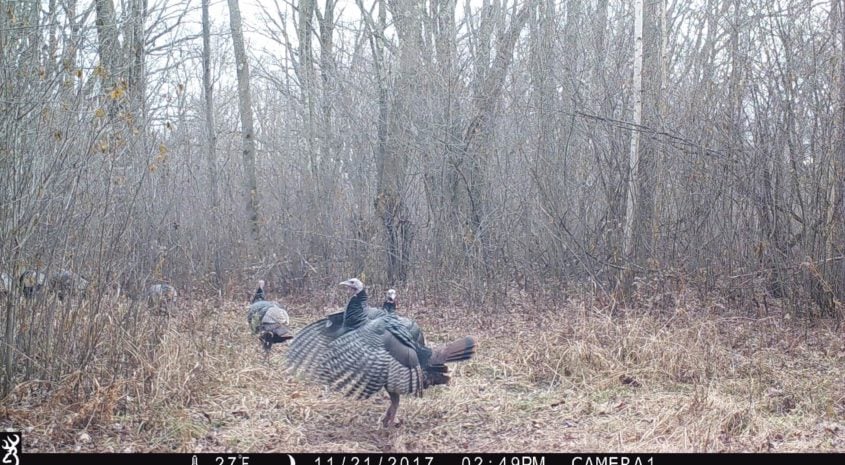There’s nothing more satisfying than bagging a turkey! Available throughout the Eastern and Midwestern United States, hunting turkeys isn’t easy, but you can take one down with the following tactics:
- Scout Ahead – One or two days beforehand, scout out the area where you’ll be hunting. Be sure to be on the property listing at daybreak on a calm morning before you hunt. This will let you know where they roost since they usually roost in similar areas.
- Trace their Travel – Besides identifying where birds are roosting, figure out where they go throughout the day. If you know they roost in one spot and end up strutting and feeding in another, get in between the spots. It’s a lot easier to call a turkey in the direction it already wants to go.
- Offer Ample Space – Don’t get too close to the roost. Give them a little space to fly down and work to you. Bumping a turkey off the roost is not a good start to the morning.
- Be Comfortable – The more comfortable you are, the more still you can be, the better. Sometimes you have to wait in one spot for a long time for the turkey to get close enough. Turkeys have great eyesight and can detect even the smallest movement. I personally believe HECS clothing helps hide those movements.
- Learn the Call – Practice, Practice, Practice. With all available videos about calling on Youtube, you should be able to learn to call. One often overlooked idea is to listen to real turkeys calling. There are plenty of wild hen videos on Youtube as well.
- Switch Your Spots – If you have a bird hung up and it won’t come any closer, try a calling from a different spot but only if you can sneak away without getting busted.
- Embrace Bad Weather – Not always possible, but if there is a calm before the storm, it can be a great time to locate and harvest a turkey. If it is calm and thundering the turkeys will usually shock gobble at the thunder. Once it starts raining the turkeys usually get in a bad mood.
- Conceal Comprehensively – Never underestimate a turkey’s eyesight. No matter how far away you are, they will likely be able to see you, so it pays to cover as much of your body as possible. Face masks and gloves are important.
- Attack the Alpha Male – If you challenge the dominant turkey with a turkey fan or small strutter decoy, it may view you as a rival turkey and charge you. I don’t like this on public hunting land or anywhere close to other hunters for obvious safety reasons.
- Decoys – There are many decoy options. Sometimes big strutter decoys can keep a two-year-old gobbler just out of gun range. On the other hand, it can make an older tom run in to fight it. Hens are always a good option. Jake decoys and strutter decoys are great when used correctly.
And here is another tip to enjoy the turkey hunt:
- Bring company – Bring a child if you can! Nice calm spring mornings are a great way to introduce kids to the great outdoors.
For more information on turkey hunting and land suitable to hunt them on, contact us today or browse our available hunting properties.




